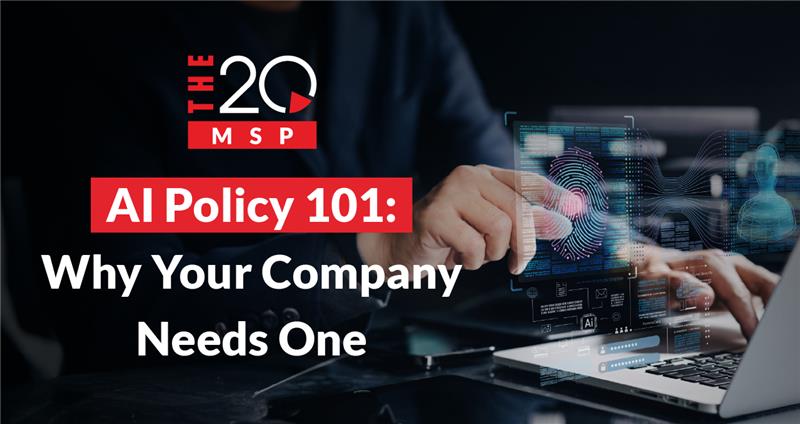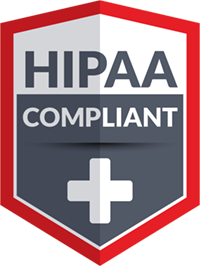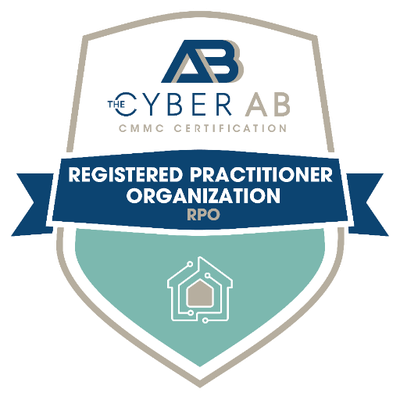
AI Policy 101: Why Your Company Needs One
AI is powerful, but with that power comes real risk.
That’s why your company doesn’t just want an AI policy – it needs one.
And not just for compliance or safety (although that’s part of it). A strong AI policy doesn’t just protect your business; it also demonstrates that you’re serious about using AI responsibly and effectively.
In this blog, we’ll break down what an AI policy is, why it matters, and how to build one that actually works.
Let’s get into it.
The Hidden Dangers of AI
AI can seem like magic. It’s easy to use, and with a little effort, you can get great results. However, without clear guidelines and rules, this ease of use can lead to issues like:
Data breaches and security leaks: Employees could paste confidential information into public AI tools without realizing their mistake. Case in point: Samsung banned the use of ChatGPT after finding out that staff had entered sensitive data, which led to a data leak.
Plagiarism: As we’ve mentioned in a previous post, AI isn’t original. AI’s responses are based on existing data. If you aren’t checking your AI’s results, your team could unknowingly publish AI-generated content that borrows too heavily, or directly, from someone else’s work.
AI can be wrong: AI is only as good as the data it’s trained on. If that data is biased or just plain wrong, the results will be too. Relying on AI without a fact-checking process can lead to messy, expensive mistakes.
Compliance risks: AI is moving faster than the laws that govern it. Without clear internal guardrails, you risk stepping over legal or regulatory lines, especially around data privacy. The E.U. is starting to make progress on AI regulations, but in many ways, we’re still in the Wild West. Caution is key.
What You Don’t Know Can Hurt You
Think your team isn’t using AI? Think again.
- A recent Gallup survey found that 44% of leaders don’t know if their teams are using AI.
- Meanwhile, 52% of employees say they actively hide their AI usage from management.
That means AI is likely already in your organization, whether you’ve sanctioned it or not. And that’s where an AI policy becomes critical.
So, What Exactly Is an AI Policy?
Think of it like a user manual for using AI in your company.
An AI policy defines what’s acceptable and what’s not when it comes to using AI tools in your organization. It outlines who can use AI, for what purpose, and under what conditions. But it’s more than just a list of rules.
A strong AI policy gives your team room to explore AI safely and responsibly.
By setting clear boundaries, you take AI from a nebulous, risky concept and turn it into a reliable, powerful tool your team can trust.
It also strengthens your company’s image. With a clear policy in place, you show clients, investors, and partners that you understand the tech – and you’re using it with intention and professionalism.
How to Build an AI Policy in 10 Steps
Knowing why you need an AI policy is one thing – building one is another. Every company’s policy will be different depending on your industry, goals, and comfort level with AI. But here’s a solid starting framework you can follow:
1. Set your goals and gather the right people
Start by figuring out why you need an AI policy. Is it to protect sensitive data, boost productivity, or reduce risk? Once your goals are clear, bring in the key people – IT, legal, HR, leadership, and anyone else who uses or oversees AI in your business. Getting everyone on the same page early makes it easier to build a strong policy.
2. Explain the scope
Be clear about who the policy applies to – employees, contractors, vendors, temps, and anyone else using your systems. Consider how your AI policy applies across multiple work setups, like remote, hybrid, or in-office. Define which AI tools are included and design a clear plan for how the policy will be shared, updated, and communicated moving forward.
3. Establish accountability
Someone needs to make sure AI is used responsibly. That could be a team or a specific person, but it must be clear. Everyone using AI should also understand they’re responsible for how they use these tools and what comes from them. Set up an easy way for people to report concerns or problems so nothing slips through the cracks.
4. Audit your current AI use
Start by making a list of how AI is already being used in your company. That could be anything from using ChatGPT to write emails to more advanced tools like predictive analytics. Write it all down – big or small. Once you have a clear picture, consider assigning risk levels to each use, similar to how you’d handle cybersecurity risks.
5. Check compliance regulations
Do a little homework to stay out of legal trouble. Different industries have different rules around data and AI, so make sure you know what applies to your business. A solid understanding of these regulations will help keep your team from accidentally crossing any lines.
6. Set up your guidelines
This is where you lay down the rules. Decide which AI tools your team is allowed to use – and in what situations. For example, is it okay to use ChatGPT for brainstorming but not for client communications? Be clear about what’s acceptable.
Also, think about what kind of data can be used with AI. Anything sensitive or private should be off-limits unless you have proper safeguards in place.
One more thing: if AI plays a role in anything customer-facing, like reports, emails, or content, your customers should know. And always fact-check AI-generated content before it goes public to avoid spreading misinformation or confusion.
7. Vet any new tools
As your business grows, you’ll likely try out new AI tools. Before adding anything new to your workflow, take time to review it. Make sure it’s secure, easy to understand, and follows important rules and regulations. A simple vetting process helps avoid surprises and keeps your team – and data – safe.
8. Educate your team
This is going to be a long process, and your team will need to be educated and trained on not just the new guidelines but the tools themselves. Your team should be aware of the risks and why your AI policy exists.
9. Make it accessible
Your AI policy will have a lot of rules, edge cases, and what-ifs – so make it easy to find. Keep it in a shared spot where anyone on your team can access it anytime. That way, no one’s left guessing. And remember, this isn’t a set-it-and-forget-it doc. Be open to feedback and updates as your company (and AI) evolves.
10. Monitor and assess
An AI policy doesn’t mean much if you’re not checking how well it’s working. Build in a way to measure what’s going right and what needs fixing. Here are a few ways to do that:
- Compliance rate: How many AI projects actually follow your policy?
- Employee awareness: Run quick surveys to see if your team understands the rules.
- Incident tracking: Keep a log of any AI-related issues like data leaks or ethical concerns.
- Engagement rate: Track how often your AI tools are actually being used.
- Audit performance: If you do internal or third-party audits, see how your AI use holds up.
Regular check-ins will help you catch problems early and improve your policy as you go.
Or Work With an MSP
If this all feels a little overwhelming, you’re not alone. Building an AI policy is a new challenge for a lot of businesses, and it’s okay to ask for help.
That’s where a trusted MSP like The 20 MSP comes in. You’ll be able to work alongside experts who actually get it. Work with the pros to craft your AI policy, clarify any confusion, and make sure things are working right.
So, if you’re ready to start taking your AI use seriously, let’s chat.
About The 20 MSP
As a leading provider of managed IT services, The 20 MSP serves thousands of businesses nationwide, providing each one with white-glove service, secure and streamlined IT infrastructure, and 24/7/365 support. We believe in building lasting relationships with clients founded on trust, communication, and the delivery of high-value services for a fair and predictable price. Our clients’ success is our success, and we are committed to helping each and every organization we serve leverage technology to secure a competitive advantage and achieve new growth.




